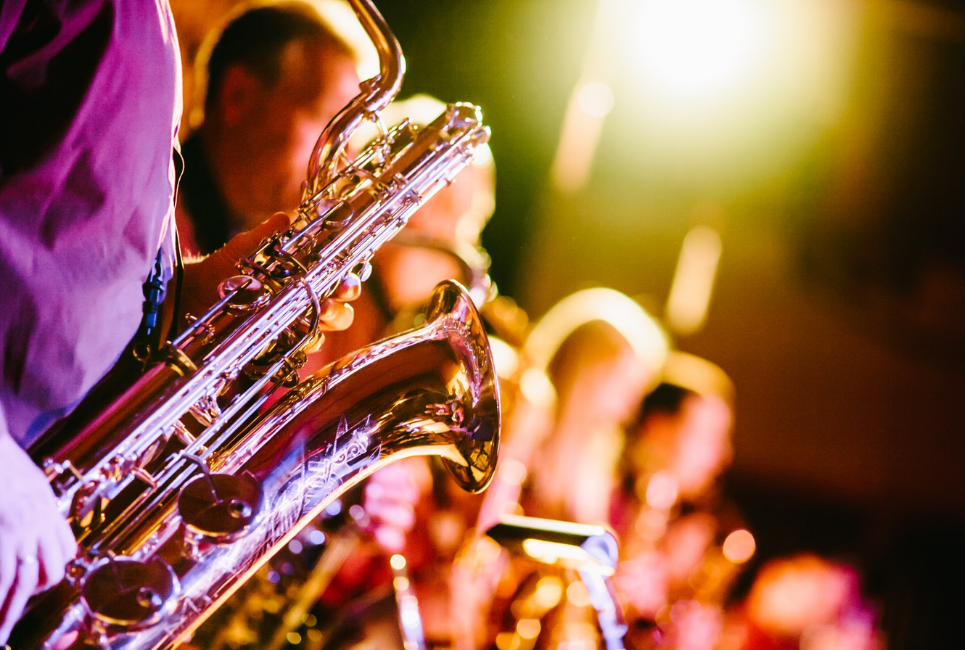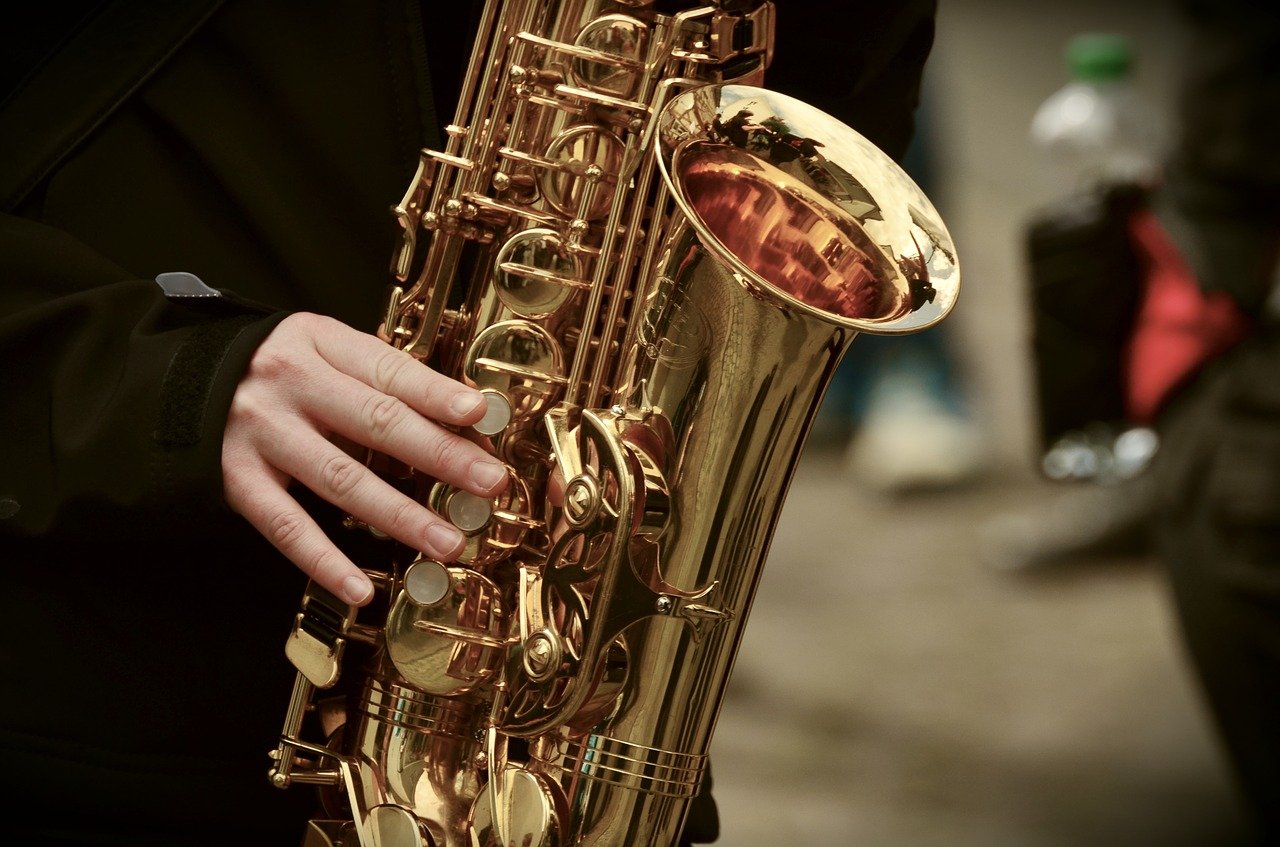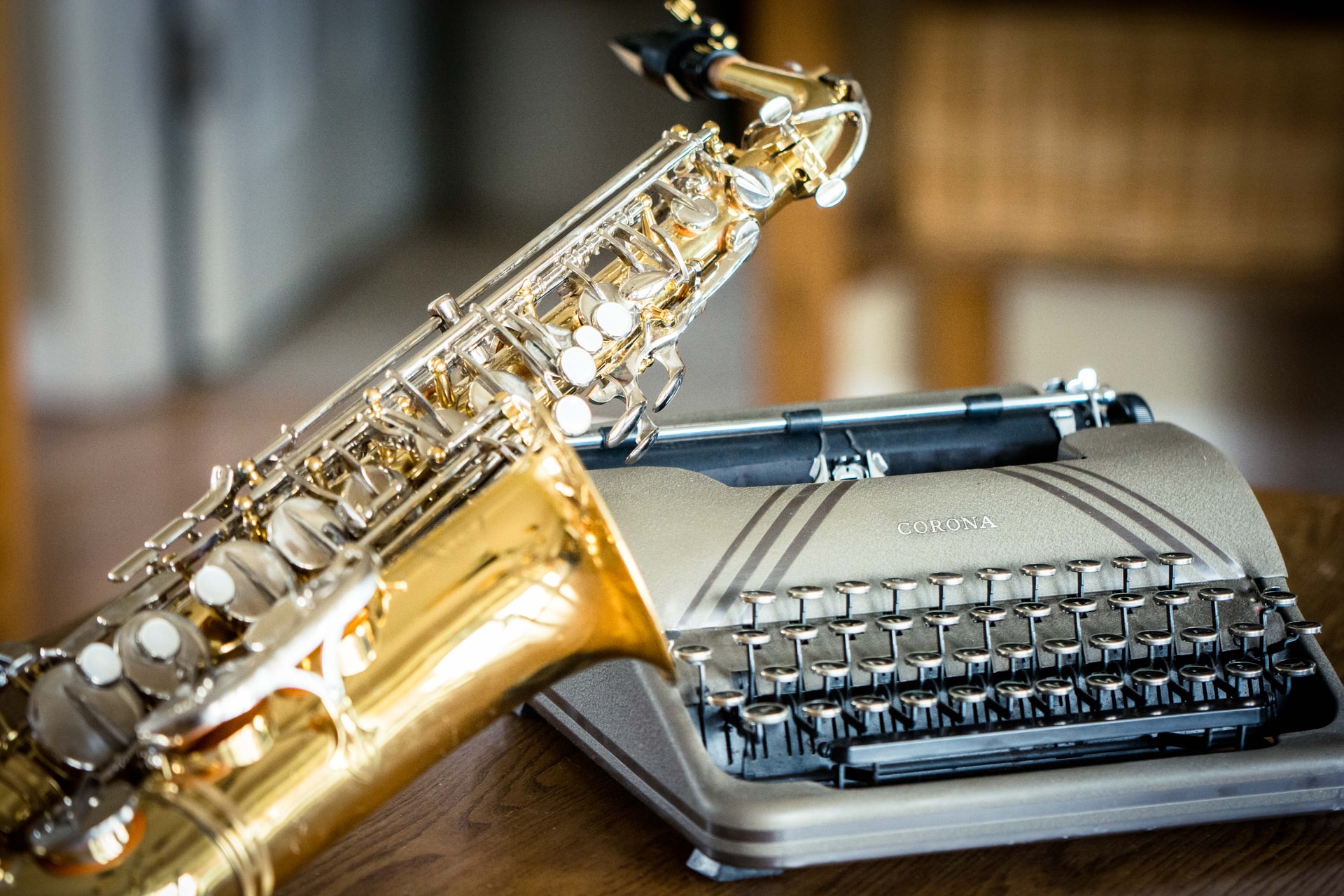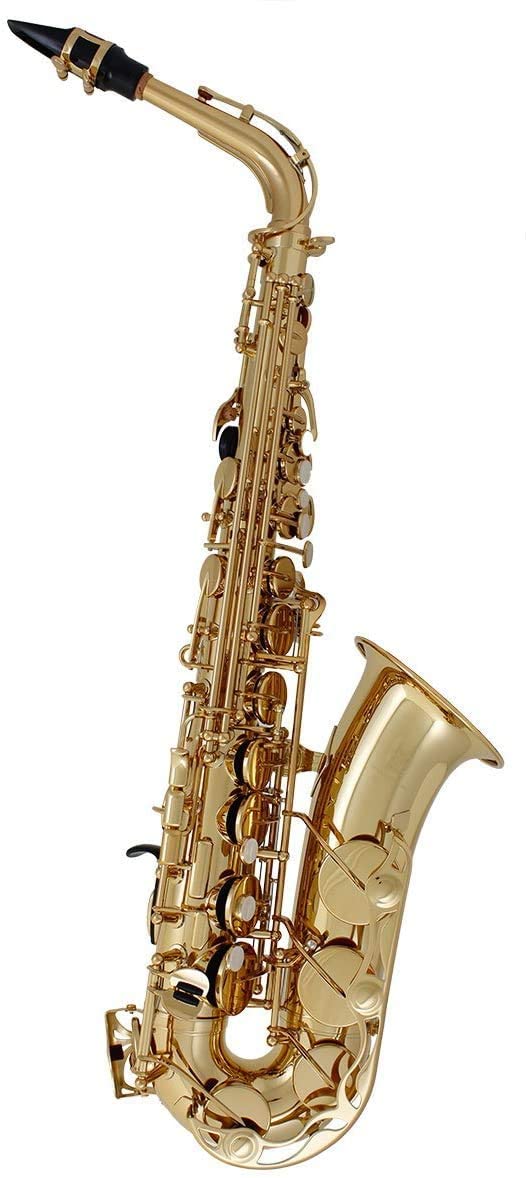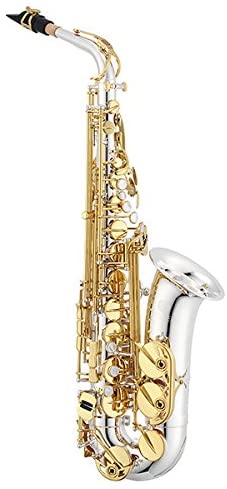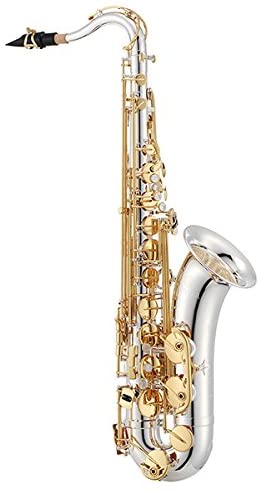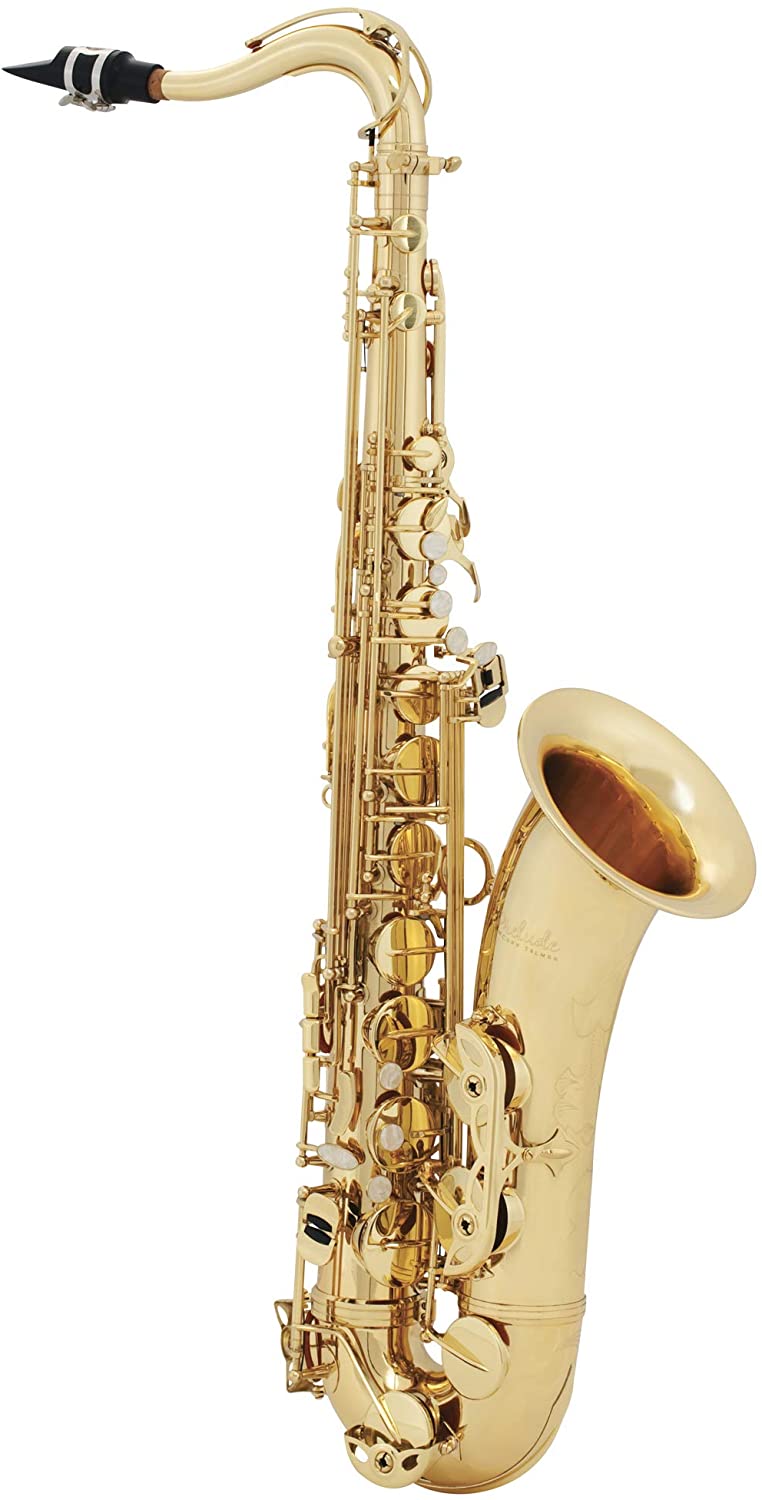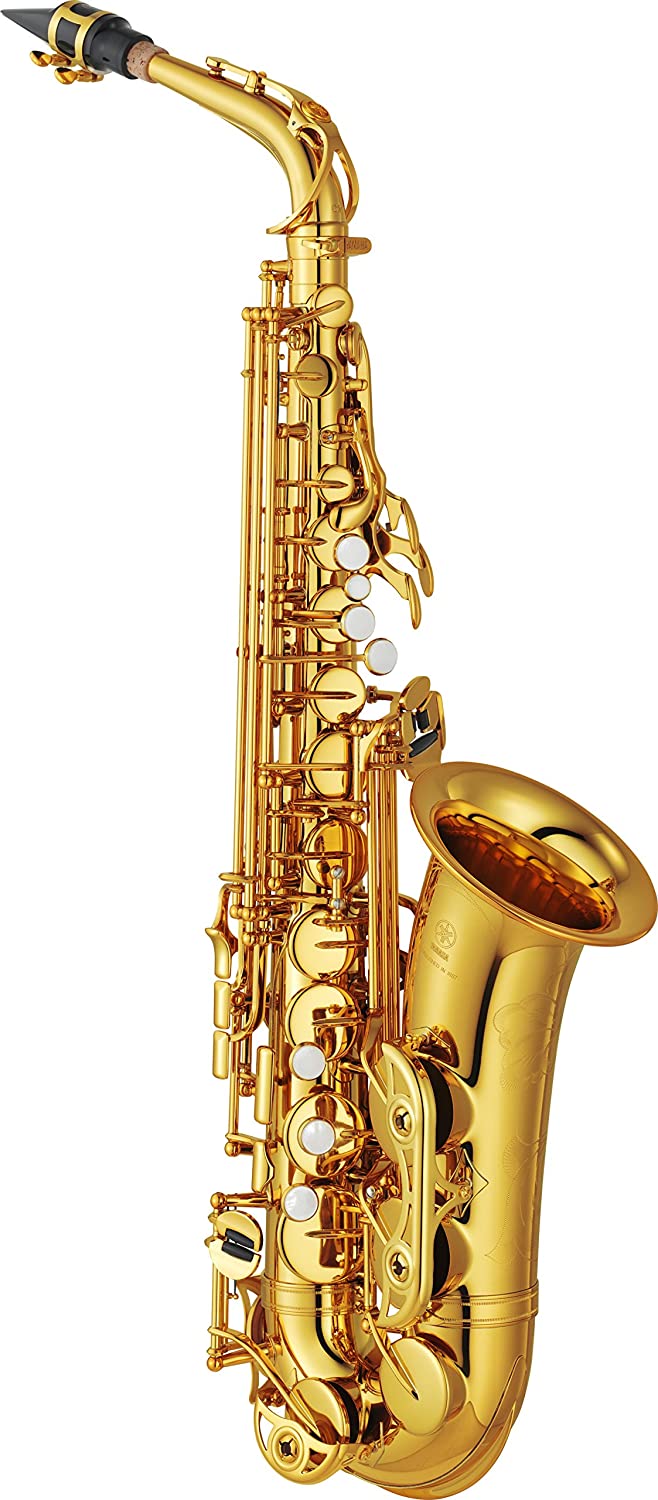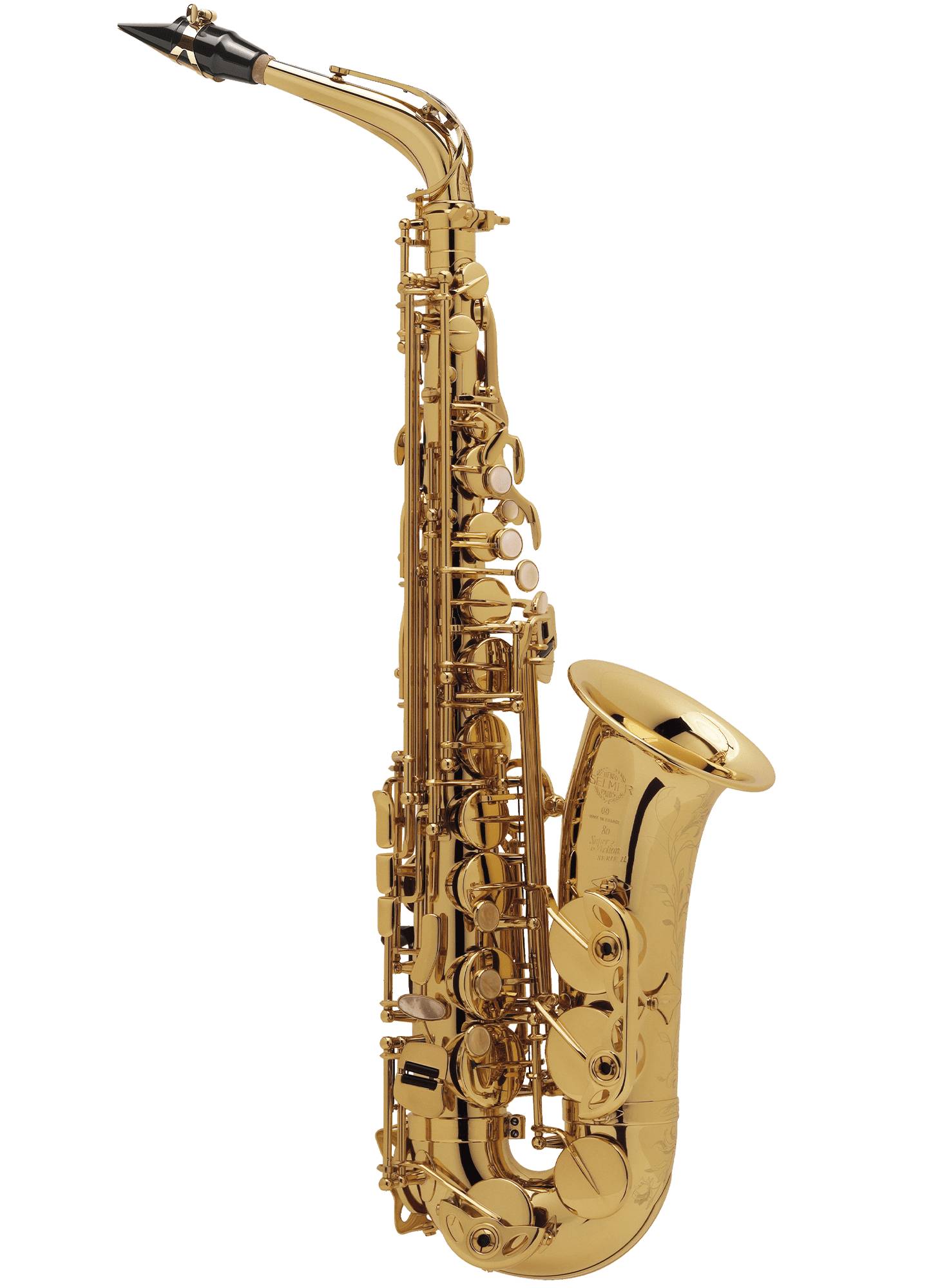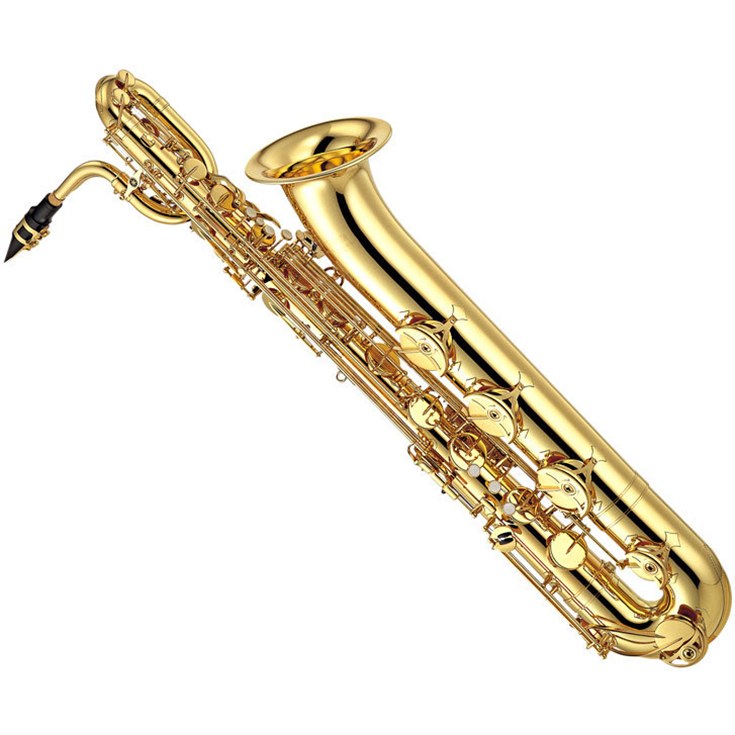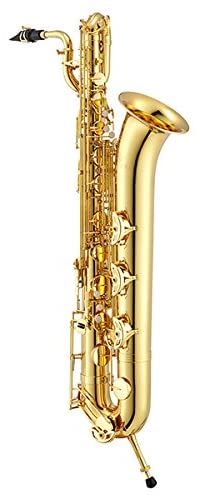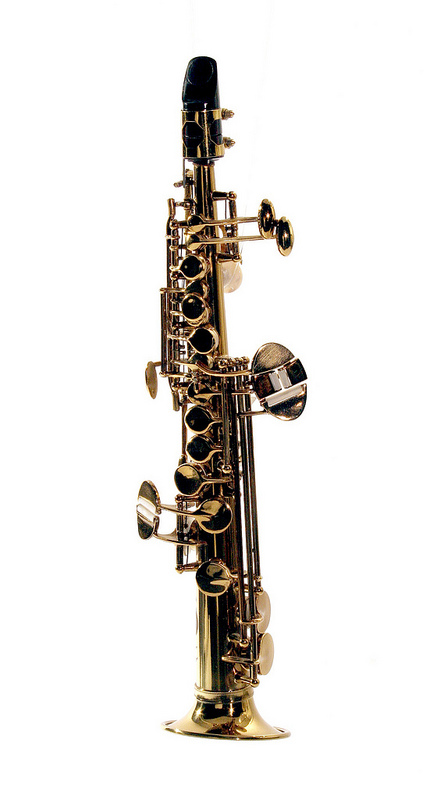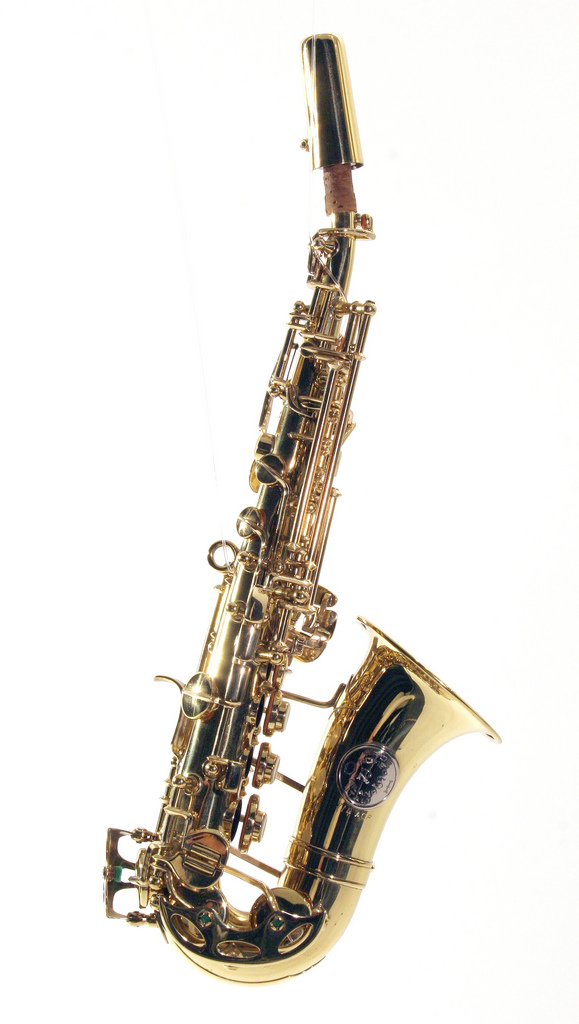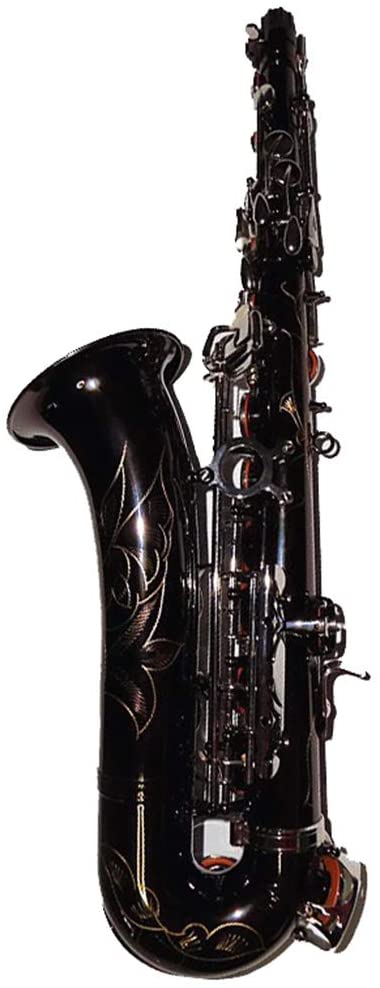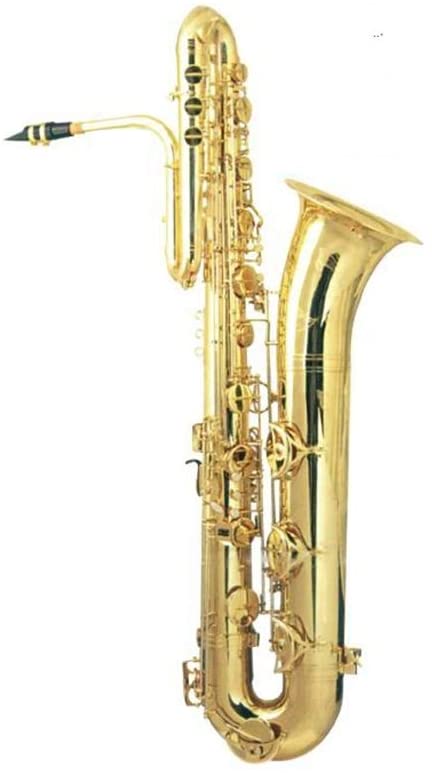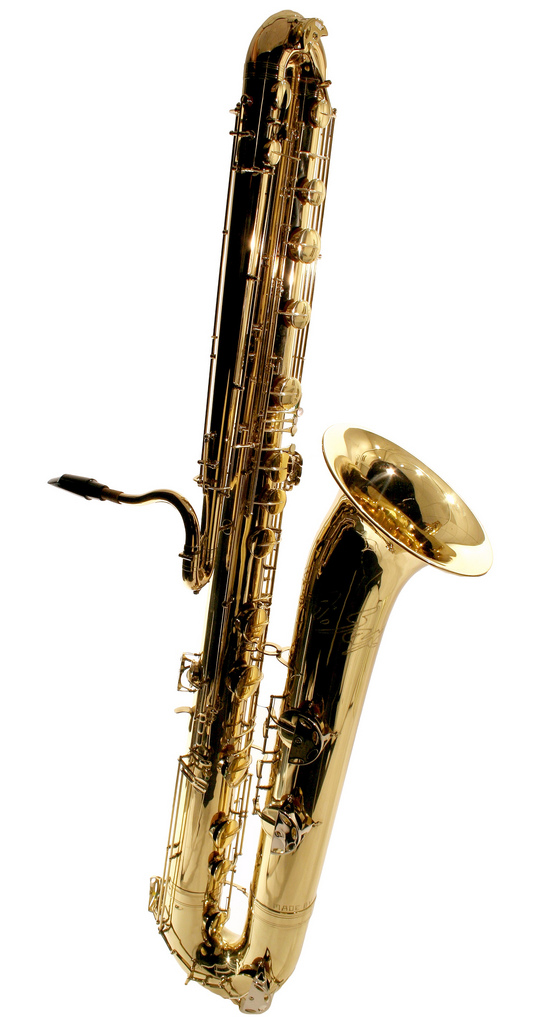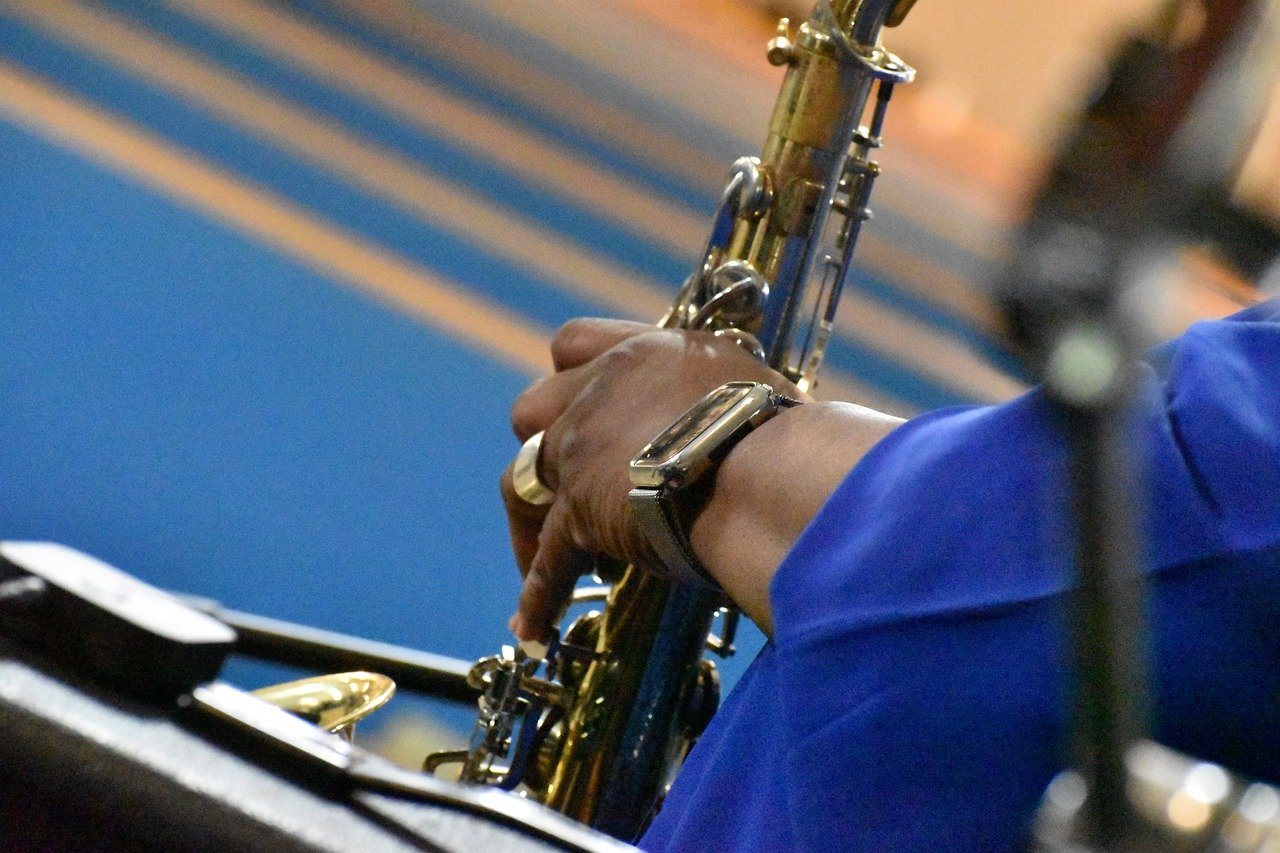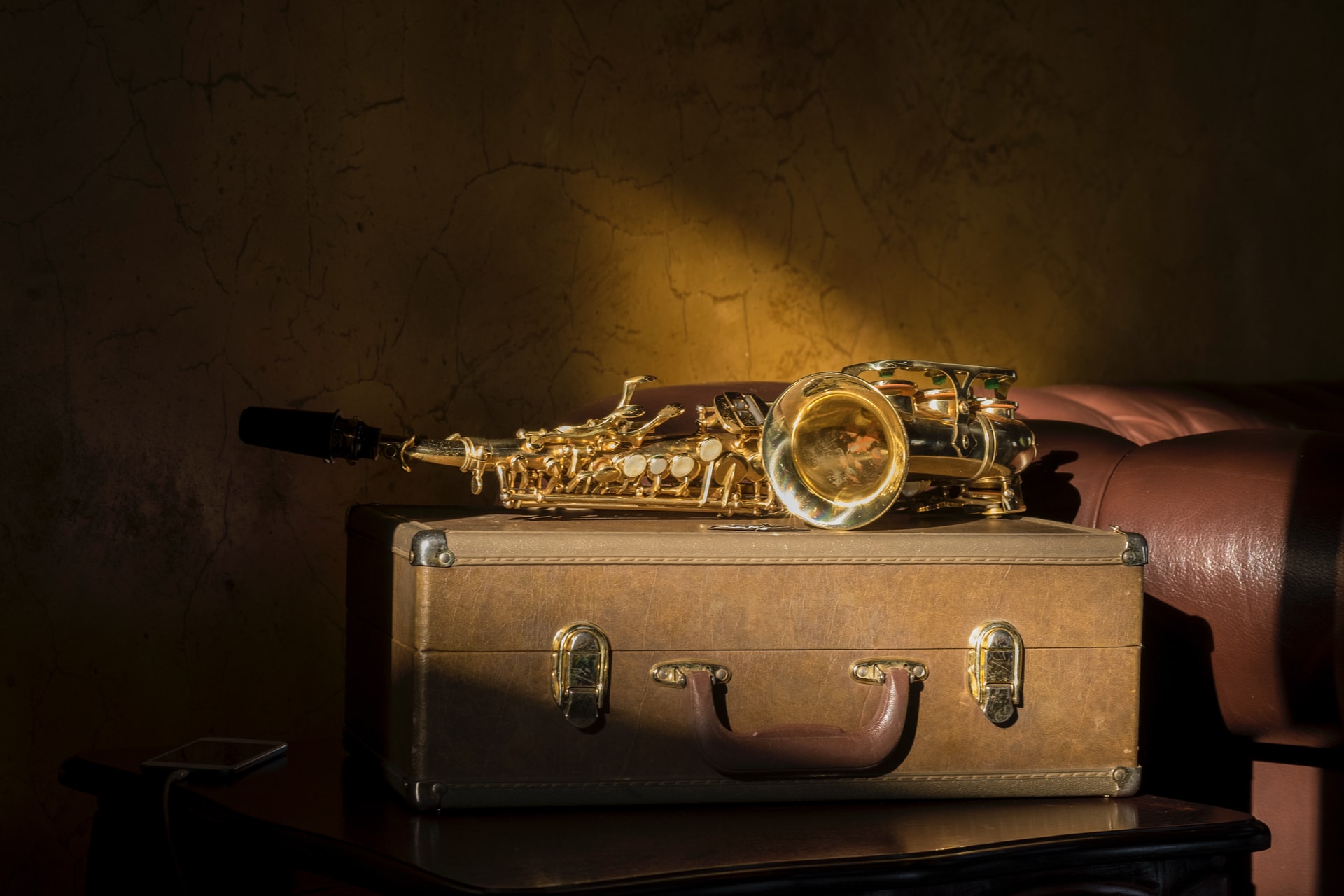- Best Beginner Clarinet: How To Choose the Right One - November 29, 2021
- How to Find the Best Clarinet Reeds - October 7, 2021
- How to Find the Best Alto Saxophone: Our Top Tips! - October 2, 2021
The saxophone is known worldwide as one of the coolest instruments ever created. Known primarily for its popularity through its use in jazz music, the saxophone has also become a leading instrument in many other genres including pop, rock, classical, RnB and many more.
In this guide I will name and explain the various types of saxophones available today. I will give you my best recommendations based on saxophone size, musician level and the overall quality of the saxophone brand.
The saxophone is a woodwind instrument. The body is typically made from brass, while the mouthpiece is made from wood, resin, or other synthetic materials. Saxophone mouthpieces use a single flat reed to produce the instrument’s unique sound. The reeds used on saxophones are very similar to reeds used on clarinets.
History of the Saxophone
The saxophone was created by one man alone, Adolphe Sax. Adolphe was a Belgian musician and had a family background in instrument repairs and creations. At a young age, Adolphe oversaw the experimental side of the instruments when working with his father and their family instrument business. This experimental process included the creation of the valves on the fugal horn but most importantly the creation of the saxophone.
The Greek word “phone” relates to the vocal sounds which are iconic as the saxophone is an instrument that resembles the voice as a “singing” instrument. The voice of the saxophone can be beautifully portrayed through classical music, but the saxophone was adopted and is popularly known as the instrument of jazz music.
After the instrument gained popularity in that genre, it spread to court music, orchestras, small bands, and popular music of the time. To this day, the saxophone remains unique in two ways.
- It’s the only woodwind instrument that was originally made in metal. The transverse flute is made from metal today but was originally produced from wood.
- It’s the only instrument where all members of the family were invented by the same person. Adolphe Sax created saxophones in two groups. The first groups were pitched in the keys of C and F. The second group was pitched in the keys of Eb and Bb. Each group consisted of seven distinct instruments.
Saxophones pitched in C, and F never caught on. They didn’t blend well with other instruments in the band or orchestra. The only sax from this group that gained any popularity is the C Melody sax.
Saxophones pitched in the keys of Bb and Eb blended well, and these are the instruments we use today. All modern saxophones are in either Eb or Bb, with the only exception being the C Melody.
Since saxophones were developed in 1846, the standard tuning of musical instruments has changed. Today we tune all bands to A=440. This number equals about a quarter-tone lower than the previous tuning standard. The tuning change makes playing a C Melody with a band or orchestra difficult. You might run across a saxophone engraved with the letters HP or LP. These initials stand for “High Pitch” or “Low Pitch.” High pitch instruments play about a quarter-tone above today’s standard tuning.
Transposing Instrument
The saxophone is known as a transposing instrument. All instruments are creating in various keys. The most common key is known as standard pitch or concert pitch which is the A above middle C often set to 440 Hz. You can think of the term concert pitch as the instruments that play in the orchestra such as the violin or even the piano. Instruments that are tuned to concert pitch are also known as instruments in the key of C. The four most used saxophones are tuned in either Eb or Bb.
This means that the saxophone will not be able to play the same notes as an orchestral instrument such as the violin. For example, If the violin were to play the note A and either type of saxophone (Bb or Eb) was to play an A, the notes would clash, not sound the same and create a horrible sound. The saxophone player, also known as a saxophonist, would need to play a different note on the saxophone to sound the same as the violin. Thus, the saxophonist transposed the note of the violin to sound the same.
Different Saxophone Types (All 9)
In total there are nine different types of saxophones. The different types of saxophones are ranged in their sizes being either small or large. The smaller saxophones have a higher range, meaning the notes sounds higher in comparison to the larger saxophones where the notes sound lower.
Initially when the saxophone was first created, Adolphe made saxophones in strange keys, such as the F saxophone and the C medley saxophone, that had many issues such as intonation problems. These instruments never became very popular and for that reason I will have not included these instruments into this guide.
There are currently nine different saxophone types that are made globally.
- Sopranissimo
- Sopranino
- Soprano
- Alto
- Tenor
- Baritone
- Bass
- Subcontrabass
- Contrabass
In-depth Guide on Saxophone Types
Soprano Saxophone
The soprano saxophone is the smallest of the four most used saxophones. Out of the most used saxophones it is the only saxophone that has a straight shape. However, the soprano saxophone is also made in the commonly used curved saxophone shape.
The soprano saxophone is the smallest and possibly the lightest of the four saxophones. It is for this reason that beginners think it wise to start learning on the soprano saxophone, thinking that the smaller and lighter instrument will make it easier to play. This is far from the truth as the soprano saxophone is possibly the most difficult, of the four, saxophones to learn.
The mouthpiece on the soprano sax is smaller than the alto, tenor, and baritone saxophones. The smaller mouthpiece requires an experienced player to produce a sound. Thus, the soprano is a difficult instrument to play as it is difficult for a beginner to create a sound. Often, beginners who start on the soprano are put off by the difficulty and quit saxophone all together.
The soprano saxophone is in the key of Bb. This is the same key as the tenor saxophone. The difference is that the soprano sax sounds and plays much higher than the tenor saxophone. However, you could technically read tenor saxophone music on the soprano saxophone, and it should sound in tune and on the correct pitch (meaning the same sounding note) but it will sound much higher than the tenor saxophone.
Soprano Saxophone Models
If you wish to purchase a new soprano saxophone, I suggest having a look at the following saxophone brands.
- Selmer
- Yamaha
- Yanagisawa
Famous Soprano Saxophone Musicians:
-
Sidney Bechet
Bechet was an American jazz saxophonist, clarinetist, and composer. He was one of the first important jazz soloists that recorded before the legendary trumpeter Louis Armstrong.
-
John Coltrane
John Coltrane was an American jazz composer, tenor saxophonist and a soprano saxophonist. He was famous for his contributions to the bebop and hard bop styles. Coltrane played an important role in the use of modes and the free jazz style. He is also one of my favorite musicians. I highly encourage you to listen to his music.
-
Grover Washington Junior
Grover Washington Jr. was an American Jazz/funk/Soul/funk saxophonist. He is considered to be one of the founders of the smooth jazz genre.
-
Kenny G
Kenny G is an American smooth jazz saxophonist. He was made famous for his album Duotones. Kenny G is known as a controversial artist as he has successfully produced millions of copies of records while not being as good as other artists playing the instrument. However, Kenny G has made a significant contribution to smooth jazz playing.
Beginner Soprano Saxophone Model:
This is possibly one of the best beginner saxophones to start your saxophone journey. Yamaha is an amazing Japanese brand that has been around for decades. The company has an outstanding reputation for produce high quality saxophones that will not disappoint. It is for this reason that you would not need to bother about purchasing an “intermediate model” saxophone when purchasing the YAS- 280.
This model comes with a case, a high F# key (an essential addition to saxophones) and it comes with a beautifully gold Lacquered finish. This model has the ability to play and sound like the saxophones heard on professional recordings. The disadvantage to purchasing this horn is the high price. For a beginner saxophone the Yamaha 280 is rather expensive as there are cheaper alternatives available. However, if you are willing to spend the cash you will not be dissatisfied with your purchase.
| Pros | Cons |
|
|
Intermediate Soprano Saxophone Model:
Jupiter is well-known and reputable brand that has been making saxophones and other woodwind instruments for decades. The company is well known for its ability to create a reliable, durable and easy to play instrument. This is true for the JAS 1100SG model.
The JAS 1100SG model is ideal for the intermediate to advanced saxophonist wanting to improve their skills with less limitations from a student model saxophone. This model comes with a silver-plated body with a carefully structured silver-plated neck designed to produce a vintage tone and color.
| Pros | Cons |
|
|
Advanced Soprano Saxophone Model:
Selmer is possibly the best saxophone brand in the world. The French company has been around for more than a century and prides itself on high quality saxophones. It is for this reason that you will often find that the list of disadvantages on a Selmer saxophone is low in comparison to other saxophone brands.
The Selmer La Voix II model is well respected saxophone for the advanced player. The saxophone was created with intention of prioritizing expression and convenience. The saxophone has a lightweight body as well as a light weight and strong case for easy travel.
| Pros | Cons |
|
|
Tenor saxophone
The tenor saxophone is one of my favorite saxophone types. This beautiful instrument is also made using the traditional saxophone curve shape and it is in the key of Bb. The tenor sax can create a beautiful dark and rich tone that is not always possible on the other saxophone types. You can think of the tenor saxophone as the middle saxophone capable of reaching higher notes within the alto range (not as high obviously) but also reaching lower notes that the alto can’t get to. The tenor saxophone has the perfect balance between higher and lower notes that sit well with the listener’s ear.
Famous Tenor Saxophone Musicians
-
Stan Gets
Stan Gets is one of my favorite tenor saxophone musicians. He is well known for his “cool jazz” and dark and Smokey sound that drew my attention. Stan became well known for his contribution to the bossa nova style but was playing in famous bands well before his fame started.
-
Dexter Gordan
Dexter is well-known for his style and interpretation of the classic jazz style. His sound was rich and acted as a model for many tenor saxophonists listening and becoming inspired through his sound and music. The American saxophonist was one of the most influential musicians, along with Charlie Parker and Dizzy Gillespie, contributing to the bebop style.
-
Sonny Rollins
Sonny Rollins has been labeled one of the most influential and greatest living improvisors. The American tenor saxophonist produced sixty albums during his seven-decade career as a leader. Many of his tunes have become jazz standards. Rollins was clearly influenced by Lester Young, Charlie Parker, and many others, but has created his own unique style of improvisation.
Top Tenor Saxophone Models
I have chosen three different Tenor saxophone models based on musician level being beginner, intermediate and advanced player. There are more saxophones available on the market, but I would encourage you to purchase from reputable brands such as Yamaha, Yanagisawa, Jupiter, and Selmer, only to name a few.
Beginner Tenor Saxophone Model
As mentioned before Jupiter is a brilliant saxophone brand. The company is well-known for distributing many beginners to intermediate saxophones. The JTS 1100SG is the perfect saxophone for a beginner or amateur player. The model is a bit more on the expensive side compared to other brands and saxophone models. However, the JTS1100SG offers the player a beautiful vintage jazz sound based on the silver- plated body and neck design. This model will carry the player through until an intermediate level, acting as a solid investment in your music and saxophone journey.
| Pros | Cons |
|
|
Intermediate Tenor Saxophone Model
The TS711 is the cheapest Selmer model created by the company. However, this student model saxophone is slightly more expensive than most student model saxophones. Selmer is a reputable brand that has offered quality saxophone for more than a century making the TS711 a good option as an intermediate model. The horn offers a molded mouthpiece offering better sound quality. The saxophone includes leather pads, making the saxophone more durable and reliable.
| Pros | Cons |
|
|
Advanced Tenor Saxophone Model
The YTS 62 model was introduced around 1979, based on its predecessor the YTS 61 model. The YTS 62III series tenor saxophone has thus been improved drastically over the past few decades. This saxophone model offers a beautiful and refined tone quality needed for an intermediate to advanced player.
| Pros | Cons |
|
|
Yanagisawa tenor saxophones are also great saxophones for advanced players. However, many of the older and vintage models have been discontinued and the remaining few saxophones are difficult to find. If you do manage to find an older Yanagisawa tenor saxophone model you will need to break the bank a little bit. Basic Yanagisawa models cost around $5000, and the pro models move up to about $12000 or more.
Always keep in mind that the Yanagisawa pro saxophone models are hand-crafted, high-quality saxophones made from a reputable saxophone company with decades of experience. You will not be disappointed.
Baritone Saxophone
The baritone saxophone is the lowest of the four most commonly used saxophones and creates a beautiful bass-like sound. The baritone sax is the largest of the common four with a completely different shape to the other three saxophones.
The baritone sax has a combination of a straight and curved shape to it. This saxophone is a rather heavy instrument, and I would recommend a harness as opposed to using a neck strap to prevent any neck or back injury, when playing this saxophone. I would not recommend this as a beginner instrument. However, if you have been playing for a while and you think your lungs can handle it, I would highly encourage you play the Bari sax.
The baritone saxophone is also the instrument played by Lisa Simpson on the TV series The Simpsons. Although, the saxophone in the cartoon series looks more like a tenor saxophone it is actually a baritone saxophone recorded by saxophonist Terry Harrington.
Famous Baritone Saxophone Musicians
The following list contains my personal favorite baritone saxophone players
-
Ronnie Cuber
Ronnie Cuber was an American jazz saxophonist. His main instrument was the baritone saxophone, but he also played the tenor sax, soprano sax, clarinet, and the flute. Cuber was known for hard bop music, but he also played rock, pop and Latin music. I personally like Cuber for his baritone saxophone solo on the tune “Moanin’” by Charles Mingus.
-
Leo P
Leo Pellegrino is an American baritone saxophonist. He is well known as a member of the band Too Many Zooz and a former member of the band lucky chops. Leo P performs various pop covers and original pop or jazz music. My personal favorite performance was his rendition of Moanin’ played at the BBC Proms concert.
Top Baritone Saxophone Models
The baritone saxophone is the largest of the for saxophones and will come with a larger price due to the increase in material needed to produce the instrument, along with other criteria as well. I have listed three of the best baritone saxophones.
-
Selmer Super Action 80 Series II
Like all the advanced saxophone models made by Selmer, the series II is hand crafted to perfection. The Series II range of Selmer saxophones are all brilliantly crafted for optimum sound and tone production. The Series II is known for its warm and mellow sound as well as its perfect intonation. The baritone Series II is an expensive model, and I would encourage more experienced players to investigate this model as opposed to beginner players.
This particular saxophone is not available on Amazon as you would need to order it directly from the company. A high-quality horn such as this, will definitely be worth the wait.
-
Yamaha YBS-52
Yamaha has a reputation for producing professional quality saxophones at a range of prices. The YBS-52 is a great intermediate model, producing a beautiful low tone. If you are looking for a reference for the horn, I encourage you to listen to Leo P as the musician plays on the YBS-52 model.
Jupiter is a popular Taiwanese brand and has a long reputation of providing high quality beginner saxophones to high school bands. The JBS 1000 is just that, a high-quality beginner saxophone model that has sound similarities to a professional model. This model is ideal for any beginner player wanting to play the baritone saxophone. The JBS1000 is an affordable option that won’t give you many problems.
Sopranissimo (Soprillo) Saxophone
This tiny saxophone is one of the few instruments in the sax family that was not created by Adolphe Sax. The first soprillo sax was developed sometime in the mid-2010s. The instrument is the highest and smallest in the saxophone family. It’s pitched in the key of Bb and plays one full octave above the soprano sax. This sax measures about 12 inches (30 cm long) without the mouthpiece. If you include the mouthpiece, it measures 13 inches. The range of this instrument is from Bb to Eb6, which is smaller than all the other instruments in the saxophone family.
Playing the soprillo sax is difficult. The tiny mouthpiece requires a very focused embouchure that requires extensive practice.
Right now, the only well-known sax manufacturer who makes soprillo saxes is Benedikt Eppelsheim in Germany.
There are only a few well-known soprillo sax players in the world.
- Randolph D. Emeric
- Nigel Wood
- Todd Groves
Sopranino
The sopranino saxophone is pitched in the key of Eb and sounds one octave higher than the alto saxophone. Like the more familiar soprano sax, you will find sopranino saxophones with straight or curved bodies. The sopranino sax is one of the least known and least used of Adolphe Sax’s original instruments.
Sopranino saxophones are rarely used in orchestras and bands. Although the occasional rock and jazz band has included this tiny, high-pitched sax. It’s also included in many saxophone choirs.
Blaise Garza used a curved sopranino sax in the song I’m Not Gonna Cry in the Violent Femmes album Hotel Last Resort (2019).
Ian Anderson is credited with playing the sopranino sax part on albums A Passion Play and War Child, released by Jethro Tull.
The Nuclear Whales Saxophone Orchestra based in California was known for including the sopranino sax.
Todd Groves plays sax, clarinet, flute, recorder, and a selection of world flutes. He is the alto sax player for the New York Saxophone Quartet. Groves also plays tenor sax for the New Jersey Saxophone Quartet. He regularly plays in the pit orchestra for Broadway productions.
Although it is a rare instrument, there are still a few companies that make them. The UK saxophone maker Yanagisawa is known for its high-quality sopranino saxophones. In the United States, RS Berkeley also makes sopranino saxes. Here’s an online review of a sopranino made by RS Berkeley.
The sopranino sax is a specialty instrument. Their small size makes it difficult for musicians to play and manufacturers to make a quality horn. Beware of new sopranino saxophones that sell online for under $2500. These cheap instruments are usually produced with sub-standard quality materials. The keys bend easily, and they are difficult to fix.
C Melody
The C Melody saxophone is pitched in the key of C. It’s relatively uncommon today but is one of the few horns from Adolphe Sax’s “high pitch” series that saw any kind of popularity.
The C Melody sax has the same playing range as other saxophones. The instrument is a little bit bigger than an alto saxophone but smaller than a tenor. Its tone is more mellow than the more commonly used saxophones.
While C Melody saxophones are not popular today, they were widely used in the early 1900s. They were popular with amateur musicians because they were in the key of C. This allowed the sax player to use piano or flute music to play popular tunes without having to transpose the music.
There were a few professional sax players who used a C Melody sax. Frankie Trumbauer stands out as one of the most well-known sax players of the 1920s and 1930s. His instrument was the C Melody sax.
These saxophones are not produced today, but it is possible to find a good used model. Good brands include C.G. Conn, Martin, King, Buescher, and Selmer. A-C Melody sax will have the words High Pitch or HP stamped on the horn in the same area where the model number is usually found.
Today, there are some professional jazz sax players who prefer the C Melody horn.
Bass Saxophone
The bass saxophone is fairly uncommon. It’s a rather large instrument pitched in the key of Bb. It plays one octave below the tenor saxophone.
The bass saxophone was first heard in 1844. Hector Berlioz used it in his arrangement of Chant sacre. In the same year, the opera Le Dernier Roi De Juda by Georges Kastner called for this low-sounding sax.
During the 1950s and 1960s, bass sax was included in several well-known pieces:
- West Side Story by Lenard Bernstein
- Music Man by Meredith Willson
- The Boy Friend by Sandy Wilson.
In addition, popular composers Percy Grainger and Warren Benson include bass saxophone in their arrangements for concert bands.
Today, bass saxophones are used in jazz, rock, and classical music.
These instruments are expensive and difficult to find. A used bass sax is likely to cost as much as a good used car. If you’re in the market for a bass saxophone, be sure to test play it before you buy. Levante and Selmer Paris both make well-respected bass saxophones.
Contrabass Saxophone
The contrabass saxophone is pitched in the key of Eb. It’s the second-lowest saxophone and plays one octave below the baritone sax. The contrabass sax is a huge instrument. The bore is roughly twice as wide as that of the baritone sax, and the contrabass stands almost 61/2 feet tall. It weighs just about 45 lbs (about 20 kg.).
The contrabass is one of the saxophones invented by Adolphe Sax and was included in the original patent in 1846.
In 1892, the contrabass was used by Patrick Gilmore’s famous bands. In addition to making good use of the contrabass sax, Gilmore is known for writing the lyrics to When Johnny Comes Marching Home.
In the early 1900s, the Evette-Shaeffer company made at least 20 of these saxes for the United States military bands. The contrabass sax was used regularly until the onset of the Great Depression.
Today the contrabass sax is not a widely used instrument. However, it is beginning to grow in popularity.
You’ll find contrabass saxophones used in jazz, where the instrument is used to double the baritone sax part to add a deep rattling quality to the music.
Some orchestras use this sax, as do chamber groups. There are a small but growing number of soloists who perform on the contrabass sax.
The best-known modern contrabass sax players include Sigurd Rascher (1907-2001) and Alistair Hinton. In 2004 the Violent Femmes added contrabass sax player Blaise Garza to their group. Anthony Braxton has used contrabass sax in several of his jazz albums.
There are three instrument makers who currently produce the contrabass saxophone. Benedikt Eppelsheim in Germany, Romeo Orsi Wind Instruments in Milan, Italy, and J’Elle Stainer in Brazil.
Subcontrabass Saxophone
This ultra-low saxophone was imagined by Adolphe Sax. He called it the saxophone bourdon after a low pitch stop on pipe organs of the time. However, Adolphe never built the instrument.
The subcontrabass sax didn’t come into being until 1999 when the tubax was built by instrument maker Benedikt Eppelsheim in Germany. There is some debate as to whether the tubax is a true subcontrabass sax or even a saxophone at all. However, for our purposes, we’ll include it as a sax.
The tubax is available in two models. One in the key of C, and the other in the key of Bb. The Bb model gives the same pitch and range as the saxophone bourdon envisioned by Adolphe Sax.
Eppelsheim’s tubax uses the same fingerings as the contrabass saxophone but uses a more narrow bore. This gives it a fatter and reedier sound than a traditional saxophone. The instrument stands 7 feet, 5 inches tall.
The Brazilian instrument maker J’Elle Stainer also makes a subcontrabass saxophone which is 9 feet, 2 inches tall.
Alto Saxophone
The alto saxophone is the second highest of the four commonly used saxophones. The alto sax is in the key of Eb which is the same key as the baritone saxophone. The alto sax is commonly made using the traditional curve shape. It is also the best saxophone to start out on if you are a beginner or amateur player.
I would strongly encourage beginners to start out on the alto saxophone as it is easier to produce a sound on the alto than the other three saxophone types.
Famous Alto Saxophone Musicians:
-
Charlie Parker
Charlie Parker is one of the most, if not the most, influential jazz musicians of all time. The American alto saxophonist was nicknamed the yardbird or bird for short by Jay McShann. Parker was famous for his incredibly fast melodies and contributions to the bebop style, which was characterized by its fast tempos and virtuosic melodies and harmonies.
-
Sonny Stitt
Edward Hammond Boatner Jr, commonly known as Sonny Stitt, was an American jazz saxophonist famous for the bebop/ hard bop genre. Stitt was also known as the lone wolf as he dedicated his entire life to jazz music, constantly touring and hardly working with the same musicians. Stitt was labeled a Charlie Parker mimic but later in his career he developed his own style especially when he played on the tenor saxophone.
-
Paul Desmond
The American jazz composer and alto saxophonist was made famous for his hit “Take Five” with the Dave Brubeck quartet. Desmond was an iconic saxophonist from the cool jazz scene well known for his inimitable smooth and flawless tone.
Differences Between the Different Saxophone Types
-
Saxophone Size
There is a clear size difference between each of the four saxophone types. Saxophones will always vary in price based on the quality of the material used but generally the larger saxophone models will be a bit more expensive than the smaller saxophones.
-
Saxophone Parts
Each saxophone type requires a mouthpiece, ligature, mouthpiece cap, cork grease, neck strap, saxophone case and most importantly a reed. These items do not always come with the purchase of the saxophone so be prepared to spend some extra cash on the essential extras. The saxophone parts vary according to size, material, and cost.
The reed is the most important part of the saxophone as it produces the sound. Reeds are a recurring cost as reeds have a short lifespan of about two to three months depending on how often you play.
-
Different saxophone brands
There are many saxophone brands available on the market. Don’t only purchase a saxophone based on cost as you may be wasting your money. I would recommend the following saxophone brands that produce high quality, long-lasting, easy to maintain and cost-effective horns.
- Selmer
- Yamaha
- Jupiter
- Yanagisawa
Best Use Tips/ Final Advice
- I would strongly encourage beginner players to start out on the alto saxophone.
- All four saxophones have the same fingering. This means that if you can play one saxophone, then you can play any of the four most common saxophone types.
- Always do thorough research before purchasing the saxophone that you want. But you should also play on the saxophone a bit before buying it. Most music shops allow you to do this. If you are a beginner player, ask your teacher to try your saxophone out first before buying it.
- Always consult a saxophone teacher/professional for more advice if you are uncertain or if you have questions. Never rely on a salesman when purchasing a saxophone.
Top Frequently Asked Questions (FAQ’s)
Answer: The best way to make sure that you have a good saxophone would be to place the instrument on its side. Look for any dents in the neck or on the body of the sax. It would be good to take the saxophone to a repairman to look for any leaks.
Answer: It is important to take care of your investment. Make sure that you have a good mouthpiece, mouthpiece cape, ligature, reeds, cork grease, instrument cleaning equipment and a solid case for the saxophone. It is also good to carry a small tool kit of screwdrivers for minor repairs.
Answer: The short answer is yes. However, there are different saxophone types for different levels being beginner, intermediate and advanced saxophone types. The professional type is more expensive than the beginner type.
Question: What are the 4 main types of saxophones?
Answer: The four most commonly used saxophones are:
- Soprano -this is the highest pitched of the common saxes
- Alto – this is the type that music teachers and school band directors start students on
- Tenor – commonly used in jazz and rock bands
- Baritone (bari) – lowest-pitched common saxophones.
Question: What is the most famous type of saxophone?
Answer: The tenor sax is used most often in well-known professional bands. It’s used in Rock, Jazz, Classical, and many other musical genres. Former US President Bill Clinton played the tenor sax.
Question: What is different about each type of saxophone?
Answer: The main difference between the types of saxophones is their size. The higher-pitched saxophones are smaller and lighter than the lower-pitched ones.
Conclusion: What saxophone should I buy? Why?
Always aim to purchase a high-quality saxophone model no matter if you are a beginner player or an advanced player. Good saxophones are like investments, increasing in value and quality over time. A low-quality instrument will have leaks and intonation problems within the first few months and repairing and maintaining the instrument will be challenging due to the poor material used to create the saxophone.
Listen to your favorite saxophone artists and find the sound that you would like to produce. From there, you can choose your saxophone type. Each saxophone type has its own set of difficulties so do not only rely on purchasing a great horn when the magic lies in the player and not only n the equipment.

